Search results for: “solar volatility”
-
Energy Costs of Constructing Solar Assets
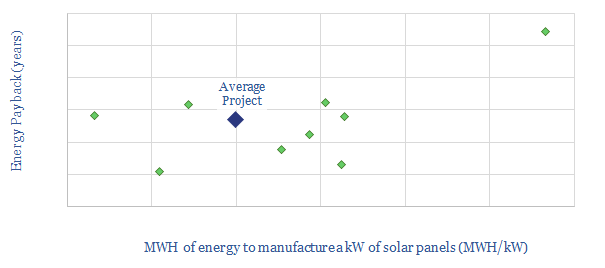
This data-file quantifies the energy costs of manufacturing solar panels, based on 10 studies and prior projects. We see the average solar project requiring 5MWH/kW, with a 2.3-year energy payback, a c10x energy-return on energy-invested and CO2-intensity of 90kg/boe (for contrast, average oil is c440kg/boe and average gas is c350kg/boe).
-
Solar power: decommissioning costs?
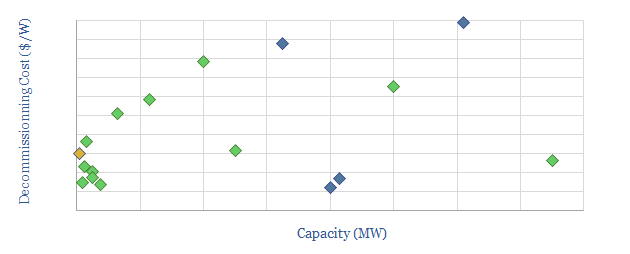
This data-file aims to break down the costs of decommissioning solar projects. Gross costs are estimated within a range of $0.03-0.20/W, which is around 3-20% of the initial installation costs. What might help is the ability to re-use old panels, which could possibly even allow a small profit at end-of-life.
-
Silver pastes for solar contacts?
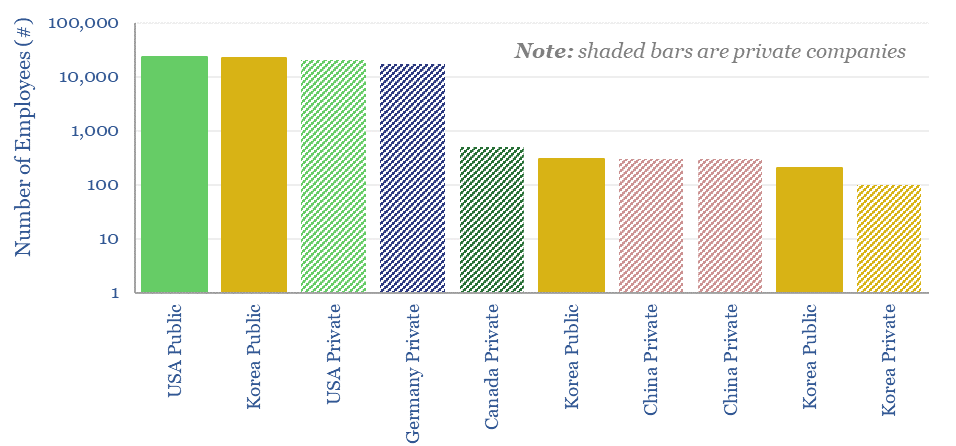
50 companies make conductive silver pastes to form the electrical contacts in solar modules. This data-file tabulates the compositions of silver pastes based on patents, averaging 85% silver, 4% glass frit and 11% organic chemicals. Ten companies stood out, including a Korean small-cap specialist.
-
Semiconductors: outlook in energy transition?

Semiconductors are an energy technology. And they are transforming the future global energy complex, across AI, solar, electric vehicles, LEDs and other new energies. This short article summarizes our outlook for semiconductors in energy transition, and resultant opportunities across our work.
-
Power grids: opportunities in the energy transition?
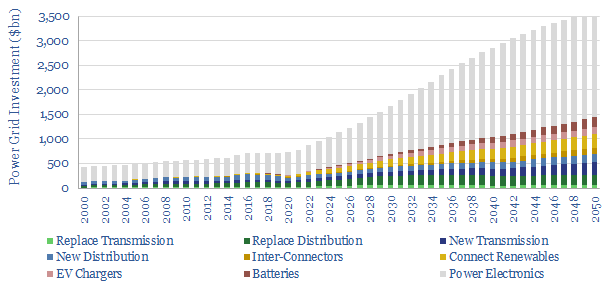
Power grids move electricity from the point of generation to the point of use, while aiming to maximize the power quality, minimize costs and minimize losses. Broadly defined, global power grids and power electronics investment must step up 5x in the energy transition, from a $750bn pa market to over $3.5trn pa. But this theme…
-
Solar power: decline rates?
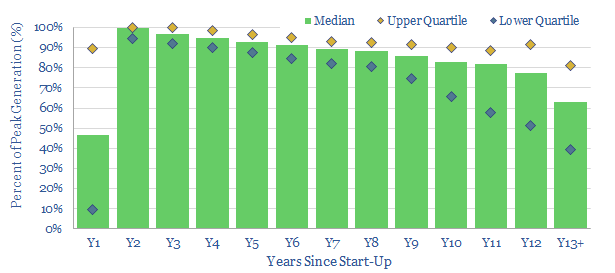
This data-file tabulates the ‘decline rates’ of 3,200 US solar power plants going back to 2001. The median YoY decline is found to run at 2.5%. However, the data are volatile and variable. Hence this data-file gives full granularity, asset by asset. Decline rates could detract c4pp from the IRRs of future solar projects and…
-
Solar power: what challenges?
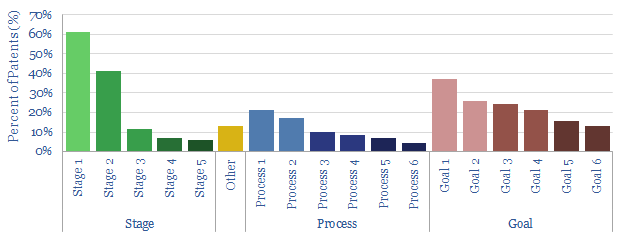
This data-file reviews 70 patents filed by leading solar manufacturers in 2020. We expect double-digit deflation to continue, while solar panels will also gain greater efficiency and longevity. The cutting edge is now in current collectors. Examples and improvements areas are described for each company.
-
Array Technologies: solar tracking breakthrough?
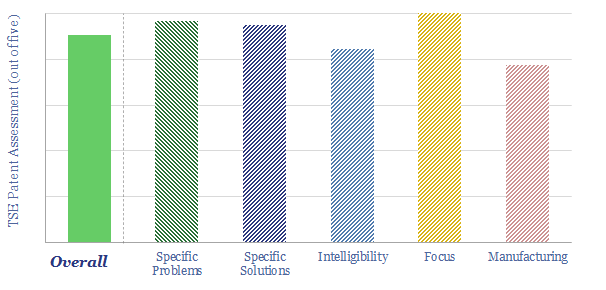
Array Technologies IPO-ed in October-2020. It manufactures solar tracking systems, supporting 25% of US solar modules installed to date. Its systems can uplift solar generation by 5-25%. we found clear, specific, intelligible patents, back-stopping six out of seven key strengths that have been cited by the company.
-
Renewables+gas LCOEs versus standalone gas turbines?
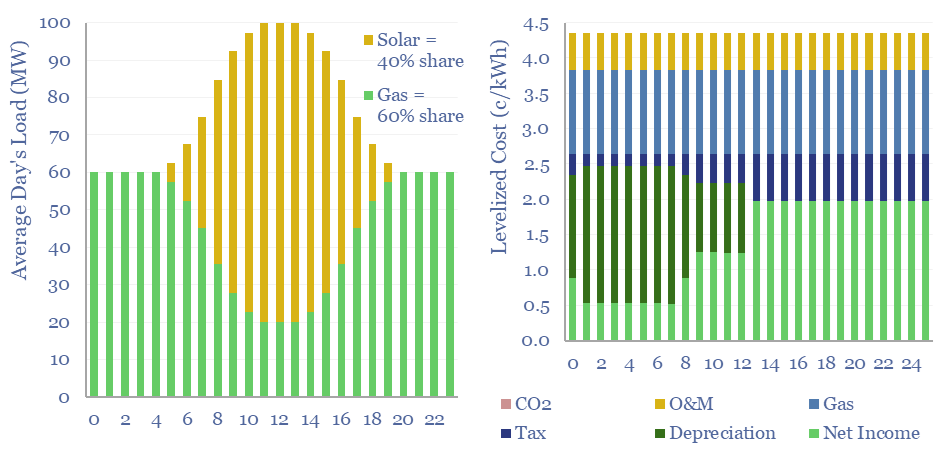
Levelized costs of electricity depend as much on the system being electrified as the energy sources used to electrify it. This data-file captures solar+gas LCOEs (in c/kWh), when meeting different load profiles, as a function of solar capex (in $/kW), gas prices (in $/mcf), and the relative utilization of solar vs gas.
-
Solar trackers: efficiency improvements?
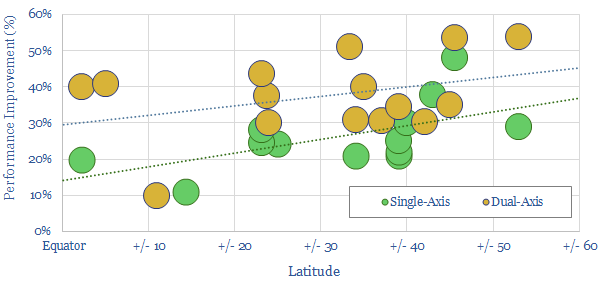
Trackers re-position solar panels to face the sun, as it arcs across the sky, day-by-day, season-by-season, due to the Earth’s 23.5-degree tilt. Solar tracker efficiency improvements typically range from 20-40%. Capex cost increases are c20%. Thus 40-90% of utility solar now uses trackers.
Content by Category
- Batteries (89)
- Biofuels (44)
- Carbon Intensity (49)
- CCS (63)
- CO2 Removals (9)
- Coal (38)
- Company Diligence (95)
- Data Models (840)
- Decarbonization (160)
- Demand (110)
- Digital (60)
- Downstream (44)
- Economic Model (205)
- Energy Efficiency (75)
- Hydrogen (63)
- Industry Data (279)
- LNG (48)
- Materials (82)
- Metals (80)
- Midstream (43)
- Natural Gas (149)
- Nature (76)
- Nuclear (23)
- Oil (164)
- Patents (38)
- Plastics (44)
- Power Grids (131)
- Renewables (149)
- Screen (117)
- Semiconductors (32)
- Shale (51)
- Solar (68)
- Supply-Demand (45)
- Vehicles (90)
- Wind (44)
- Written Research (356)